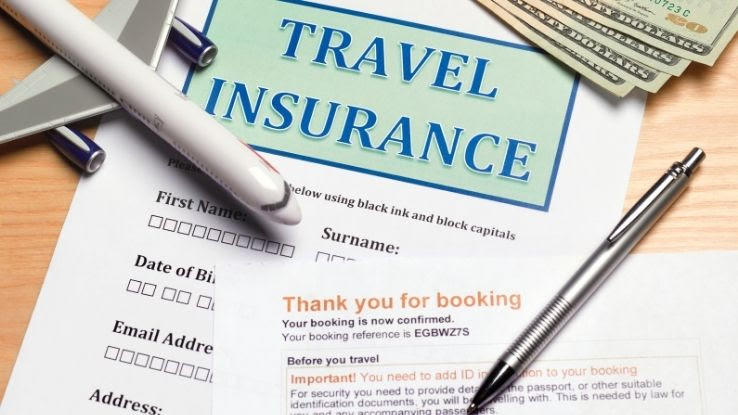Our Pacific Prime Diaries
Our Pacific Prime Diaries
Blog Article
The Of Pacific Prime
Table of ContentsOur Pacific Prime PDFsPacific Prime - TruthsThe Basic Principles Of Pacific Prime The Ultimate Guide To Pacific PrimeGetting The Pacific Prime To Work

This is because the data were collected for a duration of strong financial efficiency. Of the estimated 42 million people who were without insurance, just about regarding 420,000 (regarding 1 percent) were under 65 years old, the age at which most Americans become eligible for Medicare; 32 million were adults between ages 18 and 65, around 19 percent of all adults in this age group; and 10 million were kids under 18 years old, concerning 13.9 percent of all children (Mills, 2000).
These estimates of the number of persons uninsured are produced from the yearly March Supplement to the Existing Populace Study (CPS), performed by the Demographics Bureau. Unless or else kept in mind, nationwide price quotes of individuals without health insurance and proportions of the population with different kinds of coverage are based on the CPS, one of the most extensively used resource of price quotes of insurance policy protection and uninsurance prices.
The Definitive Guide to Pacific Prime

Still, the CPS is specifically beneficial since it produces yearly price quotes reasonably promptly, reporting the previous year's insurance policy coverage approximates each September, and since it is the basis for a constant set of price quotes for more than 20 years, enabling analysis of trends in insurance coverage gradually. For these reasons, along with the substantial use the CPS in various other research studies of insurance protection that are presented in this record, we count on CPS estimates, with constraints noted.

The estimate of the number of without insurance people increases when a population's insurance standing is tracked for numerous years. Over a three-year period starting early in 1993, 72 million individuals, 29 percent of the U.S. https://www.4shared.com/u/V2DOm1s8/pacificpr1me.html. populace, were without protection for a minimum of one month. Within a solitary year (1994 ), 53 million people experienced at the very least a month without protection (Bennefield, 1998a)
Six out of every 10 without insurance adults are themselves employed. Working does enhance the likelihood that one and one's household members will have insurance, it is not an assurance. Also members of family members with two full time breadwinner have nearly a one-in-ten opportunity of being uninsured (9.1 percent without insurance rate) (Hoffman and Pohl, 2000).
The 6-Second Trick For Pacific Prime
New immigrants represent a significant proportion of people without health and wellness insurance policy. One evaluation has attributed a significant portion of the recent growth global health insurance in the size of the U.S. uninsured populace to immigrants that got here in the nation in between 1994 and 1998 (Camarota and Edwards, 2000). Current immigrants (those that involved the United States within the past four years) do have a high price of being uninsured (46 percent), but they and their children account for just 6 percent of those without insurance country wide (Holahan et al., 2001).
The connection between medical insurance and accessibility to care is well established, as documented later in this chapter. Although the relationship between health insurance and health results is neither straight nor easy, a substantial scientific and health and wellness services research literary works web links medical insurance coverage to improved accessibility to care, much better high quality, and improved individual and populace health and wellness status.
Levels of evaluation for checking out the impacts of uninsurance. This discussion of wellness insurance protection focuses mainly on the united state population under age 65 due to the fact that essentially all Americans 65 and older have Medicare or other public insurance coverage. It focuses especially on those without any wellness insurance for any type of size of time.
See This Report about Pacific Prime
The troubles dealt with by the underinsured are in some respects comparable to those faced by the without insurance, although they are typically much less severe. Wellness insurance coverage, however, is neither needed nor enough to acquire accessibility to medical solutions. The independent and direct impact of health insurance policy coverage on accessibility to wellness solutions is well established.
Others will certainly get the health and wellness treatment they need even without health insurance coverage, by paying for it expense or seeking it from companies who use treatment complimentary or at highly subsidized prices. For still others, medical insurance alone does not ensure invoice of care since of various other nonfinancial barriers, such as a lack of wellness treatment carriers in their neighborhood, minimal access to transportation, illiteracy, or linguistic and social distinctions.
The 30-Second Trick For Pacific Prime
Formal research about uninsured populations in the USA dates to the late 1920s and very early 1930s when the Board on the Price of Healthcare generated a collection of records concerning funding medical professional workplace visits and hospitalizations. This issue became salient as the varieties of clinically indigent climbed up throughout the Great Anxiety.
Report this page